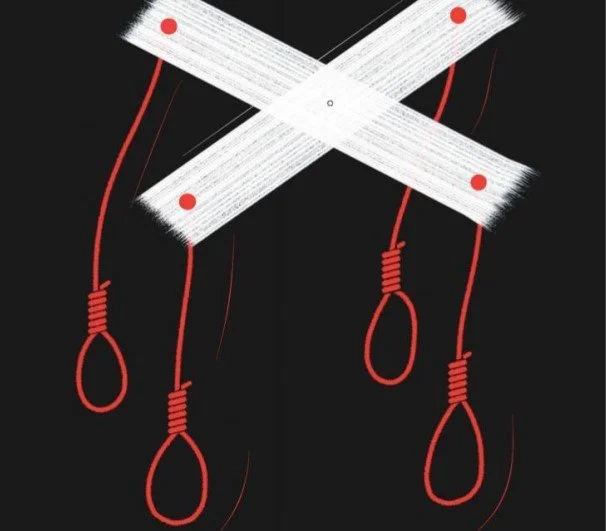Political discourse on complex issue of sexual violence against women and children is unnuanced, prioritises rhetoric over evidence-based engagement. There are many empirically tenable pro-victim arguments against harsher sentences, particularly the death penalty for sexual violence.
Over 75% of India’s prison population are undertrials while overcrowding in Indian prisons stands at 118%. These stark realities are often cited to represent the scale of the crisis in India’s criminal justice system. The Supreme Court of India recently acknowledged, in Satender Kumar Antil vs CBI, the ineffectiveness of India’s bail system and its contribution to this crisis.
Read MoreRecent intervention by the Supreme Court suggests that there is a concerted effort to plug procedural gaps in death penalty sentencing, building on the vision outlined in 'Bachan Singh'
Read MoreThe Court’s recent judgment in Manoj and Ors. vs State of MP seeks to address this long ignored yet critical aspect of death penalty sentencing. This specific attempt in Manoj must be seen with the Court’s apparent discomfort over the last year with procedural unfairness in sentencing being carried out by the lower courts.
Read MoreThe Commission investigation directed that the 10 police officers involved in the encounter be prosecuted for murder, under Section 302 of the Indian Penal Code. The Commission found that the police version of events — that the accused were armed and were pelting stones at the police, who then fired at the accused in retaliation — to be “concocted”, and noted that the police had made a deliberate effort to suppress the fact of the juvenility of two of the accused.
The Supreme Court’s May 18 order releasing A G Perarivalan, one of the convicts in the Rajiv Gandhi assassination case, is the culmination of a long-drawn-out battle for freedom spanning over 31 years. Perarivalan’s agonising wait may have ended, but his struggle serves as a grim reminder of the several failures of our criminal justice system.
Read MoreThe Supreme Court has extended the deadline of April 30 by two months for the Centre to make a decision on Balwant Singh Rajoana’s mercy petition, which is pending, with excruciating cost on the prisoner, for the last decade.
Read MoreThe Criminal Procedure (Identification) Bill creates a system with virtually no fetters on processing measurements from any arrestee, detainee, convicted offender, or any person whose measurement may be considered “expedient” for any investigation.
Examining issues raised in a specific case, the Supreme Court has suo motu opened a review of the process by which courts award the death penalty. What is the procedure by which judges get the relevant information for the sentencing process, and why has the top court felt it necessary to intervene?
While the crisis in India’s legal aid system is well documented, the extent of utilization of legal aid lawyers for representation in court has received little attention. In this article, based on existing public data, we seek to demonstrate the extent of underutilization of legal aid services among prisoners nationally. The data reveals that over a period of 4 years, between 2016 and 2019, only 7.91% of the undertrials admitted into prisons utilized the legal aid services they were entitled to. This phenomenon of underutilization raises uncomfortable questions about the performance of India’s legal aid system, particularly in the context of socio-economic vulnerability of prisoners. However, the limitations of the data mean that it is not possible to determine the reasons for such underutilization – whether underutilization is being driven by lack of awareness of legal aid or by socio-economically vulnerable undertrial prisoners choosing other options despite being aware of free legal aid.
Read MoreThe Mental Healthcare Act, 2017 (MHCA) of India is a landmark and welcome step towards centering persons with mental illness (PwMI) and recognizing their rights concerning their treatment and care decisions and ensuring the availability of mental healthcare services. As mentioned in its preamble, the Act is a step towards aligning India's laws or mental health (MH) policy with the United Nations Convention on the Rights of Persons with Disabilities (UNCRPD), which India ratified in 2007. Amidst several positives, the implementation of the Act has been marred by certain practical issues which are partly attributed to the inherent conceptual limitations.
Read MoreThe law as it stands affirms that prisoners, like all individuals, deserve to be treated with dignity.[iii] This dignity is meant to be extended to death row prisoners as well. In perhaps a manifestation of this recognition of dignity, the death sentencing framework presumes that death row prisoners can be reformed and requires the state to furnish evidence towards the same,[iv] thus implying that the prison system will provide opportunities to such prisoners to undertake a journey of reflection and productive engagement.
Read MoreAs per the guidelines laid down by the Indian Supreme Court in Bachan Singh v. The State of Punjab and subsequent cases, the idea of reformation of the offender is a core aspect of death penalty sentencing . In Bachan Singh, the Court required the prosecution to lead evidence to prove that the individual is beyond reform, making a presumption in favour of reformation of the individual. But even after forty years since the landmark case, there continue to be inconsistencies in courts’ understanding of the concept. There is some clarity on one of the constituents of reformation, which is the idea of being a ‘productive member’ of society, albeit in prison. However, as a new report, Deathworthy, by Project 39A, National Law University Delhi reveals this idea of ‘productivity’ is at odds with the psychological state that consumes death row prisoners, whose life is “shrouded by a death foretold”.
Read MoreShabnam and her partner Saleem were sentenced to death in 2010 for the murder of seven members of Shabnam’s family. Over the years, all aspects of Shabnam’s life have become a public spectacle: from the “saga” of Shabnam and Saleem’s “bloody and murderous love” to her pregnancy and the birth of her son. As recently as March 2021, a mainstream news media channel reported on an incarcerated Saleem writing couplets in the memory of Shabnam, deemed his “Anarkali”.
Read MoreLargely based on the ruling in R v. M’Naghten, §84 of the Indian Penal Code, 1860, and its jurisprudence, the defence of insanity continues to operate within anachronistic theories of the mind and its understanding in the law. This paper explores how the inconsistent interpretation and application of the test under §84, as a result of reliance on long discarded notions, has injected arbitrariness and vagueness into the jurisprudence. The lack of a uniform standard in turn impacts the burden on the defence even if such burden is to be discharged on a ‘preponderance of probabilities’. With courts inferring incapacity of the accused based on a host of factors, each of which may or may not be relevant, it becomes unclear how the defence must establish its plea. Ultimately, the paper concludes that resolving the issues outlined might well require rewording and updating the insanity defence in India.
Read MoreIndia’s Anti-Trafficking Bill 2021, geared towards preventing and prosecuting trafficking offences and rehabilitating victims of trafficking, appears to be a well-intentioned move. Trafficking is severe in India, and it has been further exacerbated by the Covid-19 pandemic. The proposed bill expands the scope of offences under trafficking, and also includes cases of cross-border trafficking.
Read MoreCriminal law has been a significant site of reform in the context of sexual violence in India. Beginning with the amendments in 1983, several Supreme Court decisions and legislations have brought changes to the rape law. The paper uses findings from an eight-week long ethnographic study of rape trials in Lucknow’s Fast Track Court to argue that the legal changes have had little impact on the trial discourse. The author observed 95 rape trials, interviewed 12 lawyers, and conducted focus group discussions at 12 police stations in Lucknow. The paper exposes a chasm between the written formal law and the operational law in Lucknow’s lower court. The paper also demonstrates the narrow understanding of ‘real’ rape amongst lawyers and police personnel involving stranger rapes resulting in serious injuries. Further, the paper uses two case studies from the ethnography to reveal the normalization of sexual violence in acquaintance rapes, resulting from a narrow conception of what constitutes ‘real’ rape. It is finally argued that the transformative potential of criminal law for sexual violence is rather limited. The paper concludes by advocating for strategies outside of criminal law to combat sexual violence.
Read MoreIn a past interview, Juan E. Méndez, former UN Special Rapporteur on Torture, recounts his fears while being tortured for “intelligence” by security forces of the military junta in 1970s Argentina: “I was very scared during the interrogations. Twice they had to call a doctor to check if they could continue torturing me without killing me. Only then did I realize that I could die. But when you are in that situation you live minute by minute, thinking of the moment when the torturers will get tired and stop so you can have a break”.
Read More

















